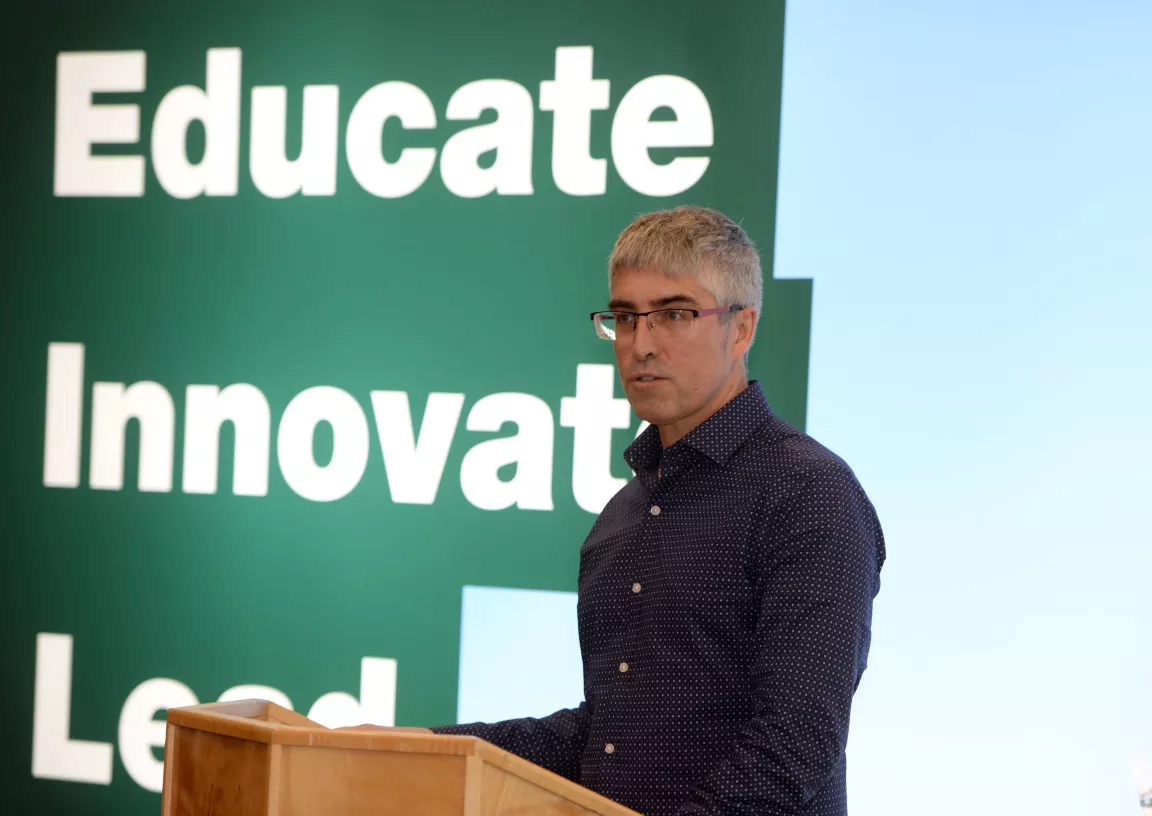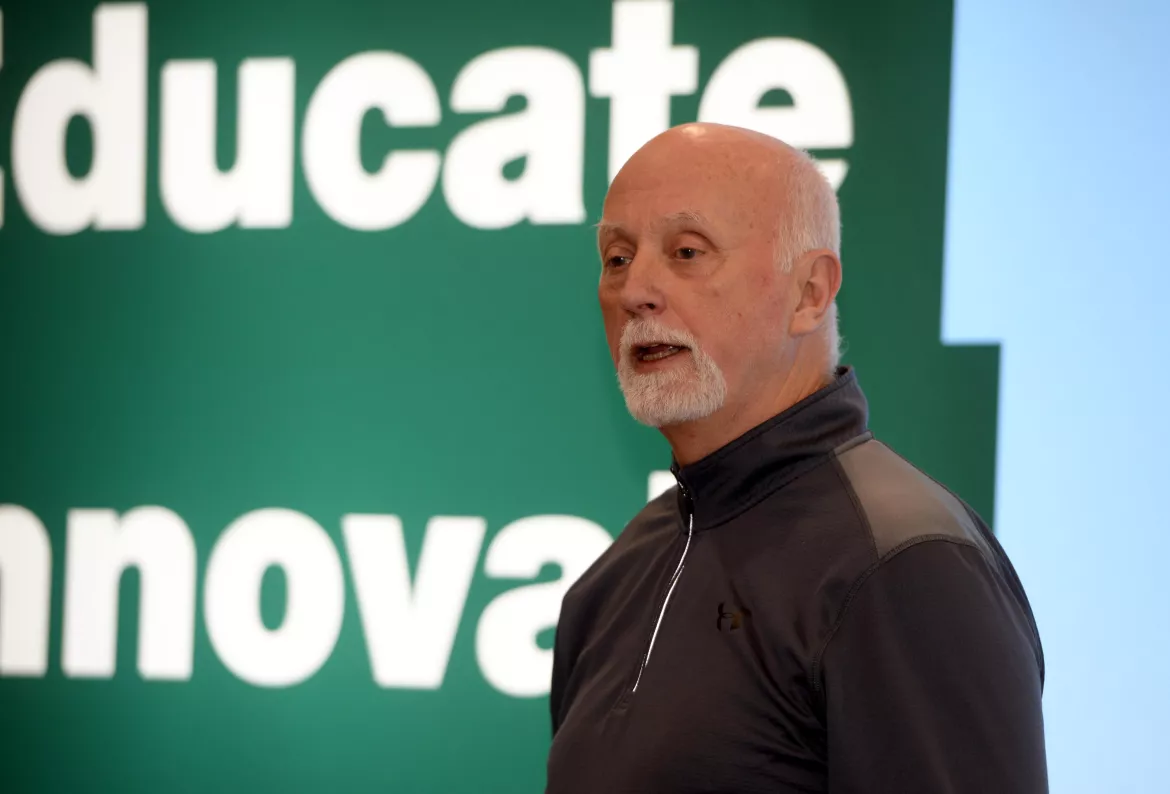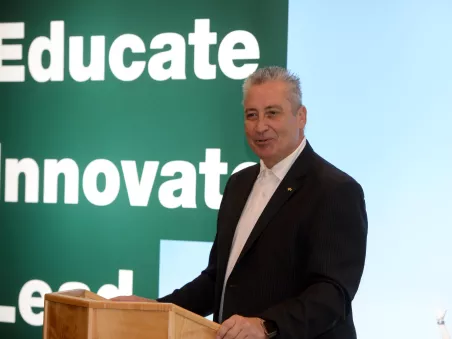Hakai Cryosphere Node opens at UNBC

Prince George, B.C. – A joint $2.4 million research project between the University of Northern British Columbia and Vancouver Island University will focus on understanding the role that seasonal snow cover and glaciers play in the hydrology of key watersheds along B.C.’s Central and Southern Coast.
Supported by the Hakai Institute, the research will be co-ordinated at the Hakai Cryosphere Node located at UNBC and led by UNBC glaciologist Dr. Brian Menounos, a Canada Research Chair in Glacial Change, and Dr. Bill Floyd, a research hydrologist with the Province of B.C. and an adjunct Professor in Geography from VIU.
The cryosphere is one of Canada’s most important natural resources, serving as frozen reservoirs of water that produce surface runoff throughout the year. Glaciers and seasonal snowpack have a vital role along B.C.’s Central Coast contributing to freshwater fluxes that transport nutrients to the marine environment.
“This Node will provide groundbreaking multi-disciplinary geospatial research opportunities for our faculty, postdoctoral fellows and students who will create local solutions with global impact,” said UNBC President Dr. Daniel Weeks. “The collaboration between UNBC, VIU and the Hakai Institute aligns with our strategic research areas, specifically around the environment and natural resources.”
Research conducted at the Node will encompass the Hakai Institute research themes of geospatial/ecosystem mapping, and big data and modelling.

“The Hakai Cryosphere Node is the natural completion of Hakai’s declared interest in everything from ‘icefields to ocean’ on the Pacific coastal margin,” said Eric Peterson, Founder and President of the Hakai Institute.
“The new Node is the natural counterpart to our existing Hakai Node at UBC’s Institute for Oceans and Fisheries, which is anchored on the “ocean” end of that continuum. The new Node will greatly expand our existing collaboration with researchers from UNBC, VIU and other institutions. In addition, we are very interested in fostering career development in this field for UNBC and VIU students. We’ve already seen the quality of UNBC and VIU graduates in our existing operations.”
Menounos and Floyd are studying the glaciers that flow into the Fitzhugh Channel, Queen Charlotte Sound, Johnstone Strait and the northern portion of Georgia Strait.
Using a variety of methods, including geospatial mapping and satellite imagery, scientists will also determine rates of glacier loss that stretch along the B.C. coastline from the U.S. border to Bella Coola and how those rates have changed over the last 100 and 1,000 years.
“Glaciers represent important elements for freshwater storage in the Coast Mountains and other mountain ranges of British Columbia,” said Dr. Menounos. “These ice masses release cool, plentiful water to many mountain streams in late summer when seasonal snow cover has been depleted. Our research on B.C.’s coastal glaciers will help inform government and local communities about past and future rates of ice loss. Our work with Hakai will explicitly focus on glacier change in some of the most heavily glacierized river basins including the Bella Coola, Klinaklini, Homathko and Squamish. All of these basins are dependent on snow and glaciers and contribute a significant proportion of fresh water to the marine environment.”
Plane-based LIDAR and unmanned aerial vehicles will be used to measure snow and ice over various scales and time frames.
“This research will fundamentally change how we measure snow and ice in remote regions of B.C., vastly improving our understanding of its importance to freshwater discharge to the ocean, and the ecosystems and communities that rely on it,” adds Dr. Floyd. “It’s an incredibly exciting time to be a hydrologist with emerging technologies to not only collect big data related to water, but also having the computing power and expertize to analyze it. We also get to spend time doing field research in a beautiful part of British Columbia – the scenery never gets old.”
-30-

